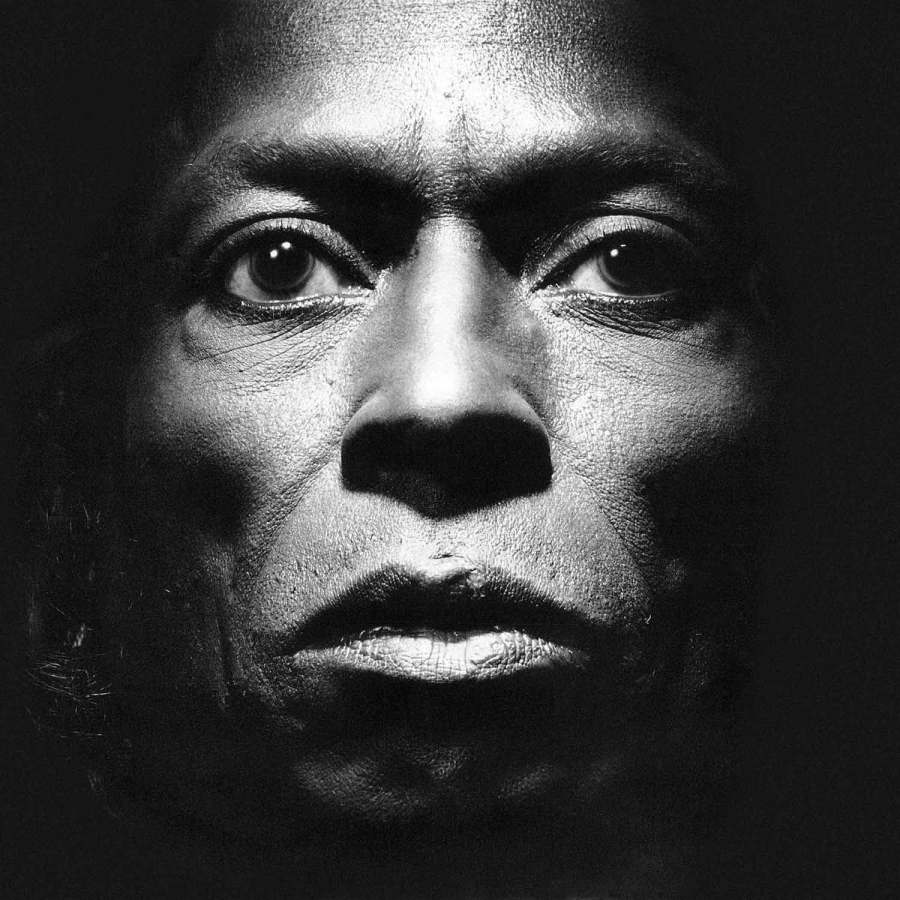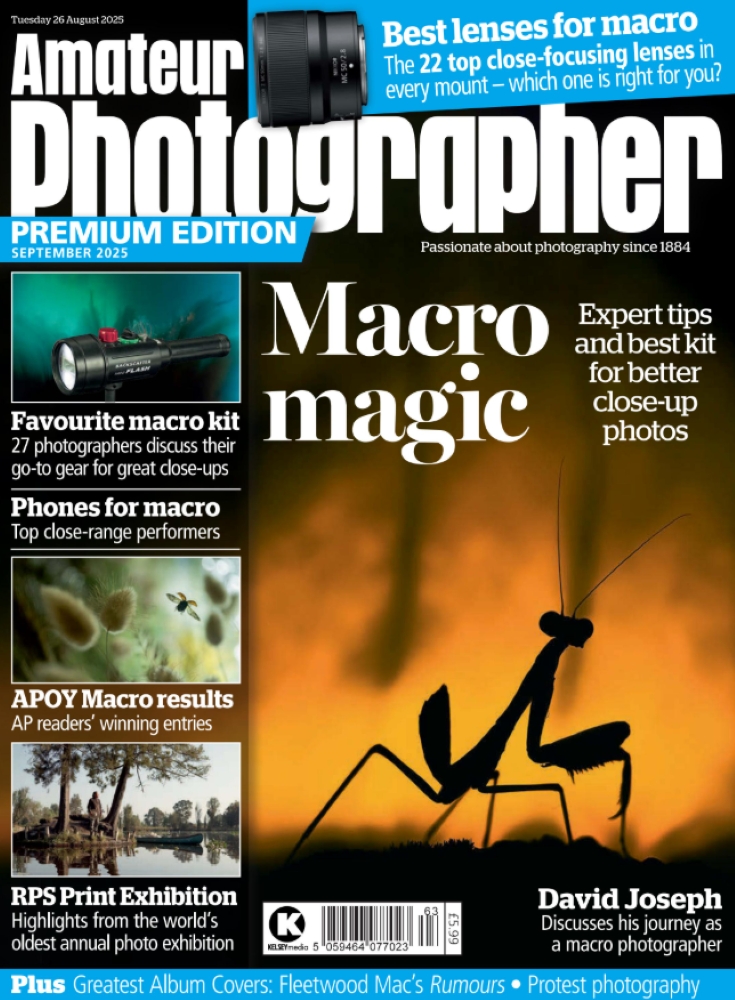In 1986 the trailblazing jazz trumpeter and bandleader Miles Davis brought his music kicking and screaming into the modern age – using synthesizers, sampling and drum machines – with his first ever album for Warner Bros, Tutu. Aside from his music, the LP boasted an iconic black & white album cover shot by the legendary fashion, advertising and fine art photographer, Irving Penn.
Fact File: Miles Davis’s Tutu
- Musicians: Miles Davis, Marcus Miller, Jason Miles, Paulinho da Costa, Adam Holzman, Steve Reid, George Duke, Omar Hakim, Bernard Wright, Michal Urbaniak and Jabali Billy Hart.
- Released: September 1986 (Warner Bros).
- Best chart performance: no.27 in the Schweizer Hitparade album charts in Switzerland.
- Sales: Over 100,000 certified sales in France alone.
- Fascinating fact: Almost until the last minute before release, the Tutu album was originally going to be called Perfect Way, after Miles Davis’s cover of the Scritti Politti song on the LP, but producer Tommy LiPuma suggested the shorter and more snappy title, which was taken from a track on the LP. The Tutu track was named after the anti-apartheid campaigner, Archbishop Desmond Tutu.
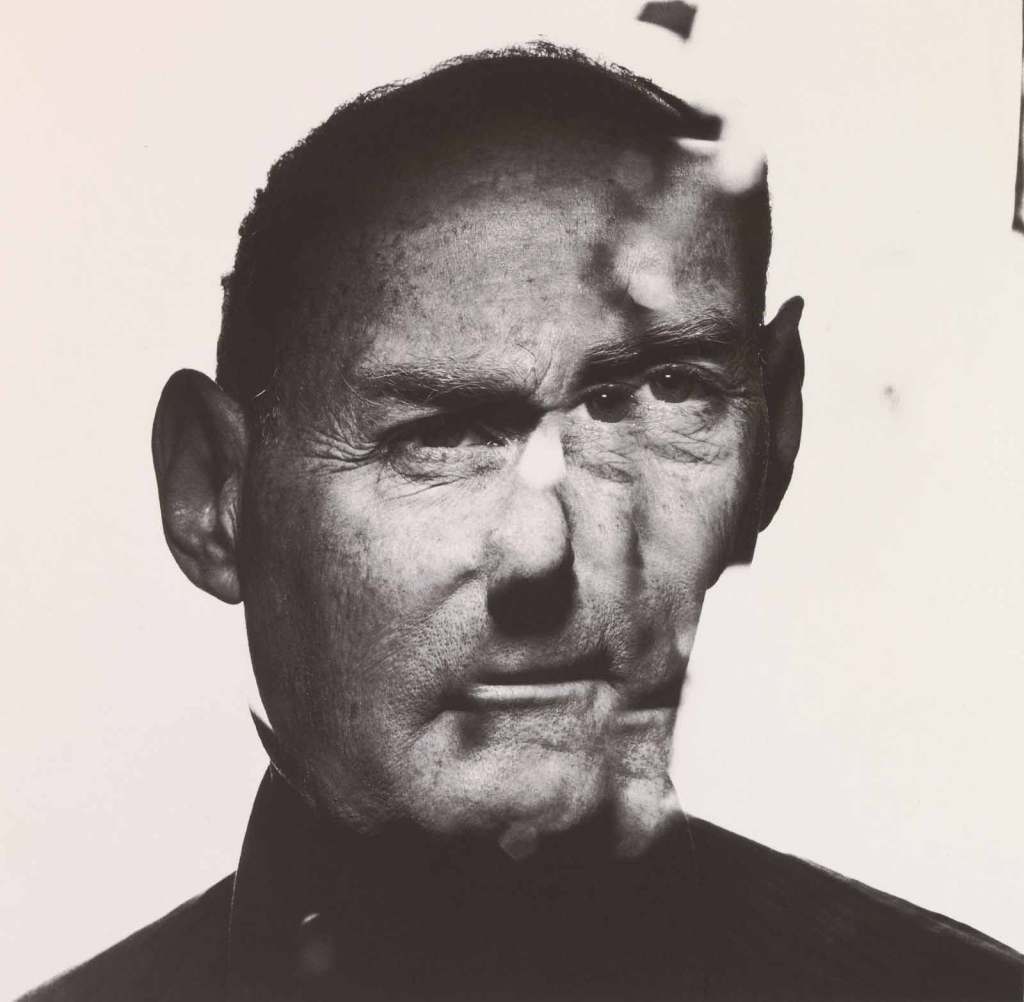
Despite the newly found creative modernity of Davis’s music, the album’s artistic packaging was a hark back to the classic jazz album covers of the 1950s – a black & white portrait of the musician, their name, the LP’s title on the front and not much else. At the time the Tutu album was recorded, Davis was 60 years old and had sold his publishing rights to Warner Bros a year earlier – that’s why it was the first Miles Davis album release on Warner after Davis’s 30-year association with Columbia Records.
The shoot took place on 1 July 1986 in New York City. In a Vogue interview, headlined ‘The Stranger Behind the Camera’, from the magazine’s November 2004 issue, the late Irving Penn (who died in 2009) explained some of the back story behind the Tutu shoot. Miles Davis had shown up for the shoot with a hairdresser and his notoriously offhand attitude. Penn recalled, ‘I tried to talk to him when he walked in, but he completely ignored me.’ Once Davis had finished preening, he stepped in front of Penn’s camera.
Penn revealed, ‘“I bet you want me to take this shirt off” he [Davis] said “Yep,” I replied. “I bet you want me to take all these gold chains off, too?” “Yep,” I said again. Then, for about an hour, we went to work. At the end, I said, “Thank you very much.” He got up, came over to me, and kissed me on the mouth. I didn’t know what to say. We shook hands, and he left. Later, I got the chance to know his music, and it struck me as being visual art of a most profound kind. How terrible I couldn’t share that with him then. This is one of the heartbreaks of the profession. I have only the kiss to remember.’ [source]
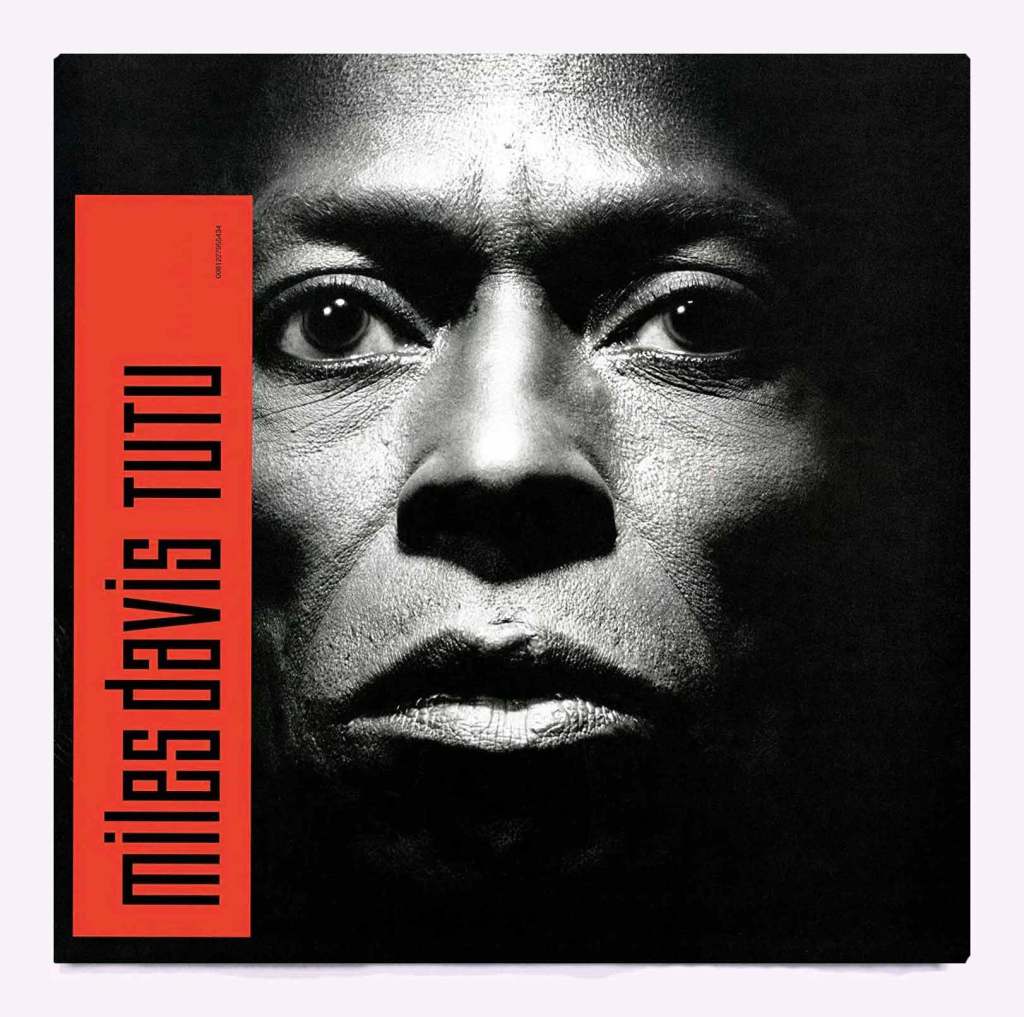
Anton Corbijn alternative
Despite Penn’s role in shooting the album images for Tutu, Miles Davis had originally wanted to use a similarly stark full-face, black & white image, which had been shot in Montreal in 1985 by the Dutch photographer and filmmaker, Anton Corbijn, while on an assignment for NME. The striking picture by Corbijn has Miles Davis’s fingers covering parts of his mouth and lower face. Davis’s pictorial preference went against the wishes of his new record company Warner Bros, but Warner Bros prevailed.
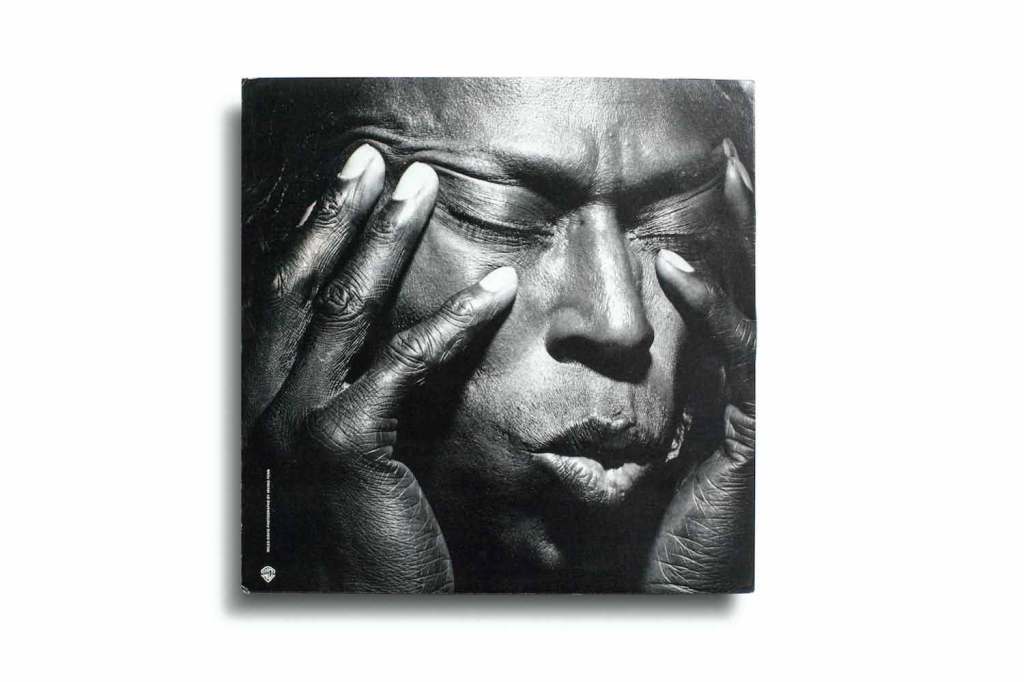
In a January 2022 interview with the Guardian newspaper Anton Corbijn commented, ‘Miles [Davis] was a beautiful man. This [1985 picture] was taken later in his life, when he was in a lot of pain. He took injections of goat serum that affected his pupils. That’s what is striking in this picture. His pupils are as large as you’ll ever see. We shot near the window because I always use available light. I can’t recall why Miles took this pose but he liked it and wanted to use it for the album Tutu. Sadly, Warner Brothers said it had to be done by “a famous photographer” and I obviously didn’t qualify at the time! So, they asked Irving Penn. I love the image Penn took, but you can see where the inspiration comes from. Miles has such a strong, intense face. It’s so beautiful.’
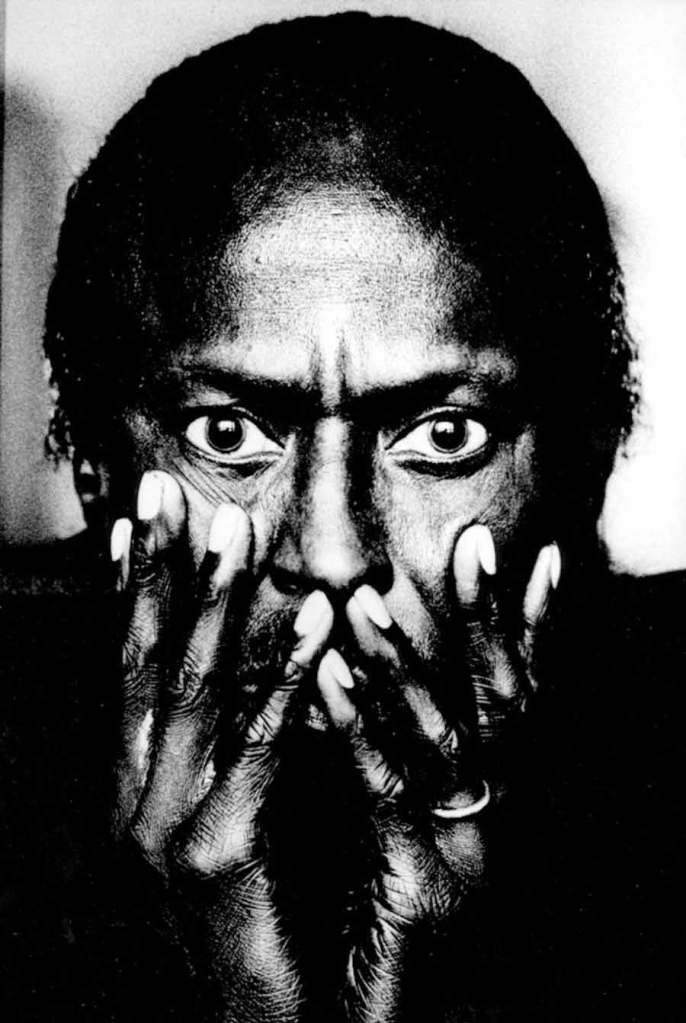
Grammy award
The cover was designed by the late Japanese art director, graphic designer and costume designer, Eiko Ishioka (who died in 2012 from cancer). She received the 1987 Grammy Award for Best Album Package for her work on Tutu as its art director. The original vinyl album featured a coloured inner sleeve printed with the album credits on one side and an Irving Penn photograph of Davis’s left hand, with his middle finger depressed in mid-air, on the reverse.
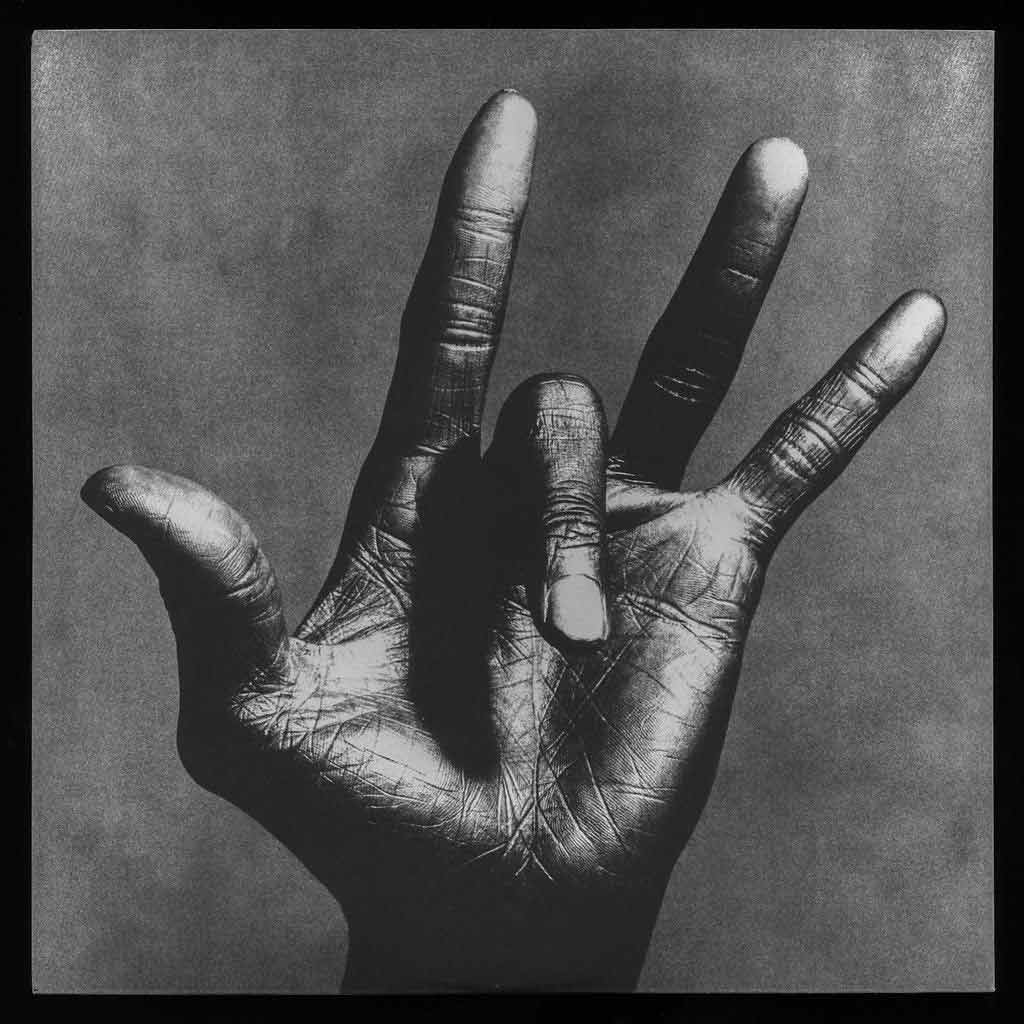
Ishioka’s involvement with Miles Davis dated back to 1972 when she designed the cover of the album Miles Davis Story Vol.2 (Japan release). The image used on that record cover was shot in the Columbia Records Photo Studio by Japanese photographer Tadayuki Naitoh. Naitoh’s photographs would later adorn the covers of Miles Davis’s live albums Black Beauty: Miles Davis at Fillmore West (1973), Agharat (1975) and Pangaea (1976).
Also involved in creating the album package was the US designer, Susan Welt. Welt’s role was to create the front and rear stickers for the album covers and the inner sleeve credits and layout, all of which were notable for their use of a bold and distinctive font. The use of stickers for the front and back credits of an album was highly unusual and has rarely, if ever, been repeated since.
Marketing overdrive
George Cole, the author of the book The Last Miles, which examines the final years of Davis’s music (from 1980 to 1991), explains, ‘Tutu was a milestone recording. The reason could be put down to the “M-factor” – Miles, the music and the marketing. Warner Bros’s marketing department went into overdrive when it came to promoting Tutu. Irving Penn was commissioned to take the cover shots and the results were stunning. [The front cover of] Tutu consists of a black & white portrait of an unsmiling Miles, shot close up and sharply lit from the front so that the sides of his head are in shadow. On the back cover is another stunning photograph of Miles, eyes closed, lips pouting as if blowing an invisible horn.’
Cole adds, ‘The cover looks like an album from the 1950s, which perhaps explains why the film The Talented Mr Ripley mistakenly used it in one of its scenes. The film is supposed to be set in the late 1950s and Tutu, of course, wasn’t released until almost 30 years later. Tutu would go on to win two Grammies; for best jazz instrumental performance and best recording package.’
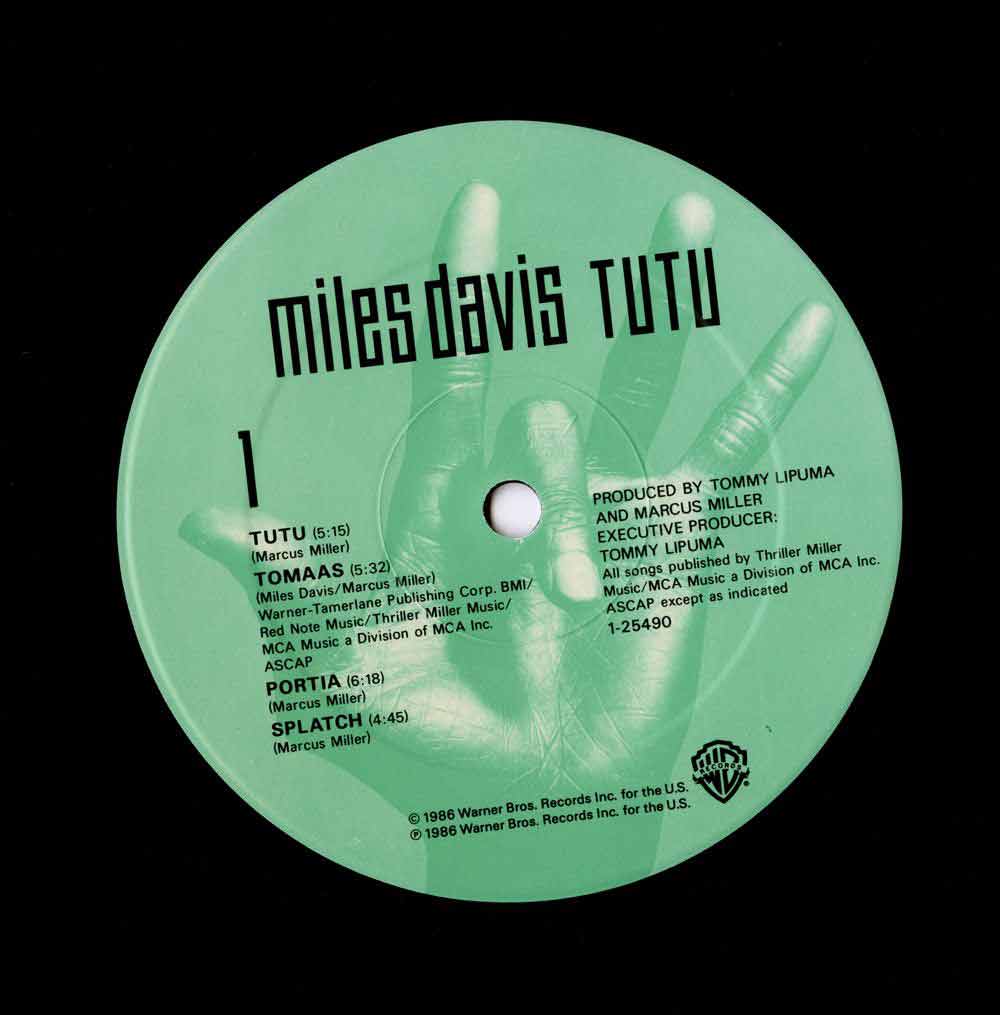
Auction records
To give you an idea of the impact of Penn’s photography of Miles Davis, on 3 October 2013 Christie’s auction house in the US sold a signed Penn print from the 1986 Miles Davis shoot for $245,000, against a pre-sale estimate of $70,000-90,000. Known as The Hand of Miles Davis (New York), July 1, 1986, the gelatin silver print depicted the legendary jazz musician’s left hand with his middle finger depressed and superbly illustrated the photographic artistry of Irving Penn. Penn’s agreement with Warner Bros had meant he couldn’t publish, use or sell any of the Miles Davis images until at least five years after the 1986 shoot.
A hand shot from the shoot – one of those with only Davis’s middle finger depressed – made the cut for the Tutu album artwork. It was used for the inner sleeve packaging of the Tutu album and the Side 1 and Side 2 central labels in the middle of the LP’s vinyl.
Davis died just five years after the launch of the Tutu album, in 1991, aged 65. To this day Miles Davis remains one of the most influential jazz musicians of all time and the Tutu album cover and artwork packaging stands up as a classic of the genre, with the artistic stamp of Irving Penn all over it.
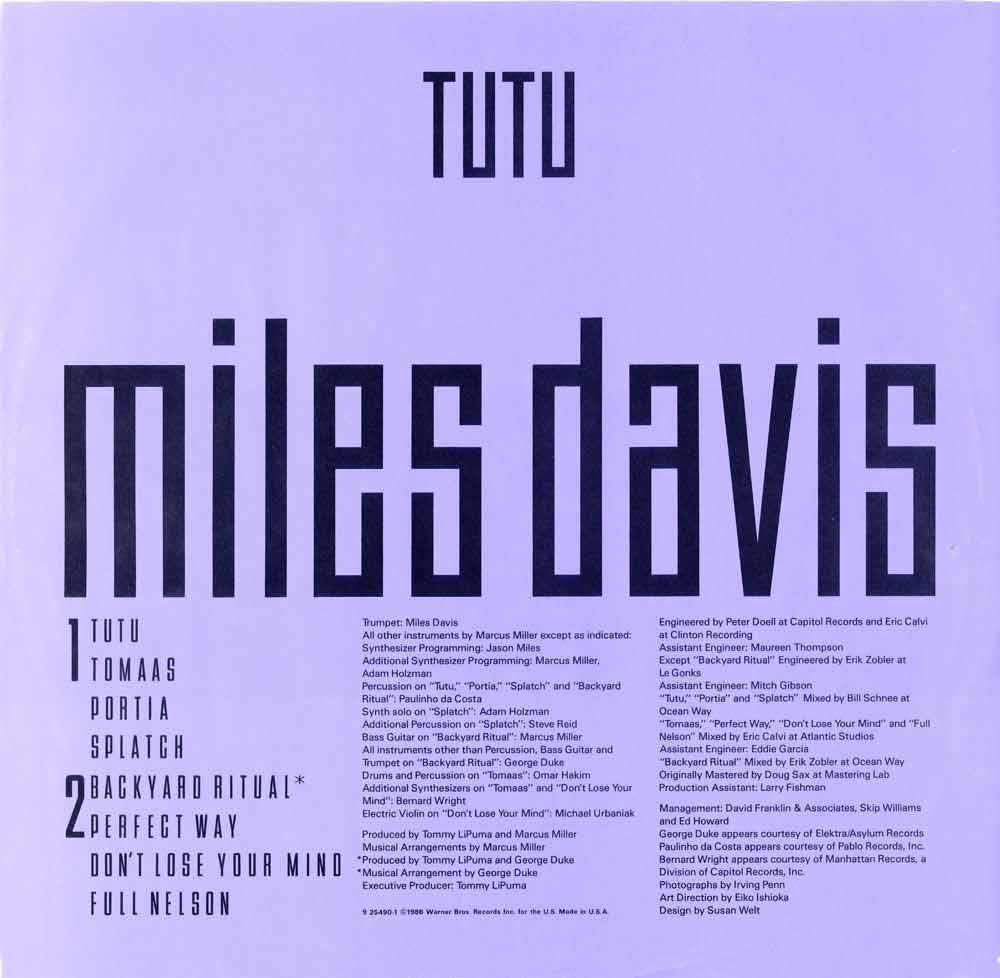
COVER STORIES: PANEL FEEDBACK

The Tutu cover is brilliant. No graphics, extraordinary at the time, just the beautiful portrait by Irving Penn, one of the greatest photographers of all time. You feel like you are looking deep into his jazz soul. I remember seeing the posters around New York City at the time… they stopped you in your tracks.

The simplicity of the photograph is its strength. The very tight spotlight suggests the mood of a late-night jazz club, like a highly elevated live shot. Irving Penn didn’t know Davis’s music at the time, which he regretted, and was later quoted as saying, ‘This is one of the heartbreaks of the profession.’

This photograph is as uncompromising as the subject. Fully detailed, completely defined and very close. The off-centre highlight in the eyes is odd. Miles appears not to be looking at us, but at some faraway vision. It’s unsettling. But the back cover changes everything… that’s where we see what Miles sees.
Related reading

